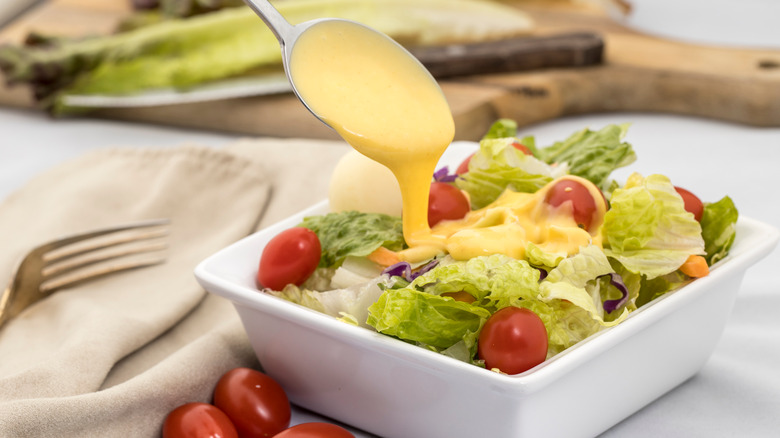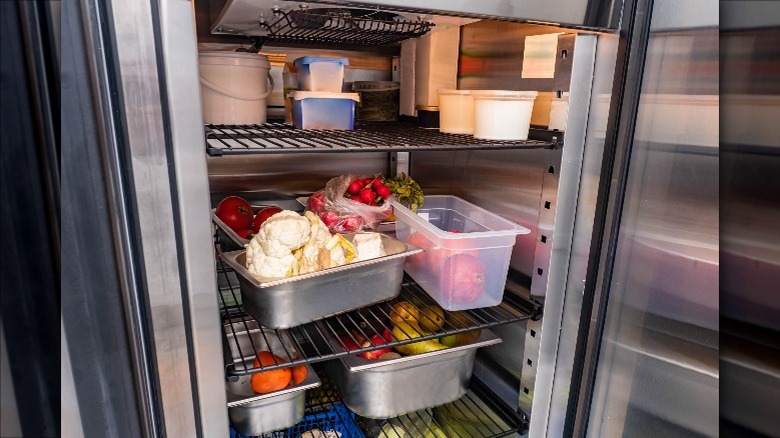Is It Really Safe To Store Salad Dressing In The Refrigerator Door?
The refrigerator is a deceptively complex appliance. Yes, you can put whatever wherever within its walls. For the best results, however, you should store certain food and drink in certain sections.
To better understand how refrigerators work and what should be stored where, Mashed talked to Lynn Williams, Customer Support & Communications Program Specialist, Food Safety and Inspection Service at the USDA. It's important to know what's really in your salad dressing, because dairy-based dressings, Williams explained, should be stored in the depths of the fridge.
"It is the USDA recommendation to store dairy-based salad dressings in the main compartment of the refrigerator to ensure they stay at temperatures below 40 degrees Fahrenheit," Williams said. The reason is that the main part of the fridge stays colder than the refrigerator door, which opens regularly. The temperature in the parts closer to the opening rises higher than the rest of the fridge, and above the stable storage conditions for dairy.
However, refrigeration of popular condiments has more to do with quality than actual food safety. "Being exposed to the fluctuating temperature of being stored on the refrigerator door will not impact the actual safety of these items," Williams noted.
Further refrigerator rules for storing salads
For some, Lynn Williams' explanation may illuminate what the term "shelf stable" means. After all, shelves are meant to be stable. So what does being stable on a stable surface mean? The USDA defines "shelf stable" as foods that can be stored at room temperature. The alternative is foods that are designated as "keep refrigerated."
The door is not the only aspect of the refrigerator you should keep in mind when storing salads though. Another is that refrigerators have a vertical dimension as well. In many cases, this won't matter. However, if you have foods like raw meat that can cause cross contamination, you should take into account how their arrangements interact with other items, such as salads.
As Professor Tom Humphrey of the Institute of Infection and Global Health at the University of Liverpool graphically described to The Daily Mail, "The meat drips on to the salad and while the chicken is later cooked thoroughly, which kills off the bacteria, the campylobacter-contaminated salad is eaten raw." To avoid this, keep raw meat at the bottom of the refrigerator. That way, it can't drip onto items below it.

